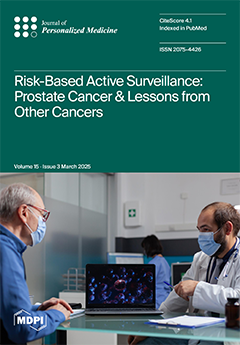Background: Chronic venous disease (CVD) is a vascular disorder common among pregnant women, due to the impairment in the venous function associated with the mechanical, hemodynamical, and hormonal changes that occur during pregnancy. CVD is linked to venous hypertension, inflammation, oxidative stress, and
[...] Read more.
Background: Chronic venous disease (CVD) is a vascular disorder common among pregnant women, due to the impairment in the venous function associated with the mechanical, hemodynamical, and hormonal changes that occur during pregnancy. CVD is linked to venous hypertension, inflammation, oxidative stress, and hypoxia, which alter placental structure and function, as demonstrated in previous works. The placenta fulfills several roles in fetal development and maternal well-being by mediating nutrient exchange; acting as a mechanical, chemical, and immunological shield; and producing essential hormones, making it crucial to investigate the effects of CVD in this organ.
Patients and methods: This work specifically analyzes the gene expression of circadian markers (
CLOCK,
BMAL1,
PER1, and
PER2), epigenetic regulators (
HAT1 and associated molecules like histones
H3,
H4,
RBBP7, and
ASF1), and the anti-aging protein
KLOTHO in placental tissue of pregnant women with CVD (CVD-PW, N = 98) compared to healthy pregnant controls (HC-PW, N = 82), using RT-qPCR and immunohistochemistry (IHC) to determine protein expression.
Results: Our study demonstrates that the placentas of CVD-PW exhibit the reduced gene and protein levels of circadian regulators (clock, bmal1, per1, and per2), increased expression of hat1 and related proteins (h3, h4, rbbp7, and asf1), and decreased klotho expression, indicative of accelerated aging.
Conclusions: These findings highlight profound molecular disturbances in the placentas of women with CVD, offering insights into the disease’s pathophysiology and potential implications for maternofetal well-being. While this study deepens our understanding of the relationship between CVD and placental dysfunction, further research is required to fully elucidate these mechanisms and their long-term effects.
Full article





